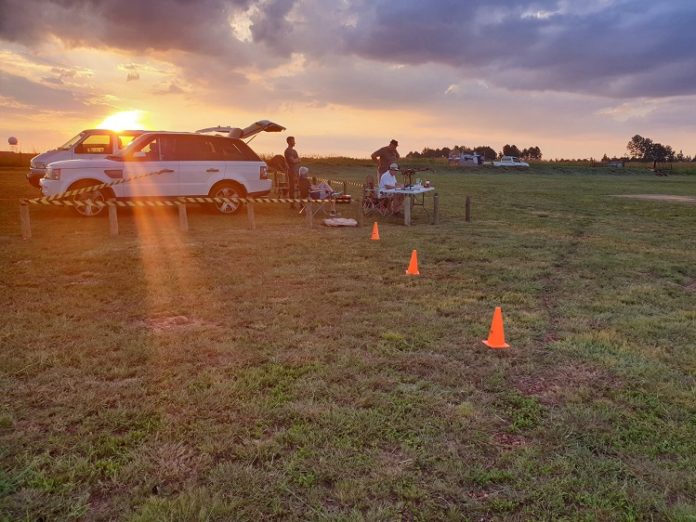Assets form the most crucial part of a company’s balance sheet, which is why so much effort is put into extending their operational lives. Regular inspection, maintenance, and repair activities help in increasing the lifespan of assets, and prevent any operational hiccups.
The task of asset inspection requires a large skilled workforce to identify anomalies and raise alarms as required. However, many industries are facing the challenge of a fast-aging workforce, with next-to-none skilled replacements available.
UAV Aerial Works delivers Aerial Surveillance Security Services through its brand Drone Guards, and General Drone Services through its brands, Media Star and UAV Aerial Works, Nationally throughout South Africa. In 2020 the strategy is to enter the African Market.
Drone technology
Commercial use of the drone technology is now on the rise. In 2017, the global commercial drone market was worth EUR 3.1 billion, with some three million units shipped. By 2022, the market value could hit as much as EUR 12.6 bn, with over 15 m units shipped. This boom is the result of growing recreational, business and research use. It’s now common for real estate agents to take aerial footage of houses, for example, while conservationists use them to monitor wildlife. And who hasn’t contemplated the thought of a journey in an unmanned drone taxi? In general, drones are expected to become prominent in all use cases that meet the so-called 4D criteria: dull, dirty, distant, dangerous. This makes them a great fit in the field of asset inspection, mainly in the energy and transportation sectors.
High Resolution Thermal Cameras:
Securing high value assets is a focus in every industry. With crime constantly on the rise, South African businesses have to be one step ahead of the criminals. High resolution thermal cameras are used for night aerial surveillance missions patrolling farms, commercial precincts, mines, construction sites etc. The real time thermal footage enables security teams on the ground to identify suspect activity and can be used to track individuals, alerting ground crews of exact whereabouts, even if the individuals are concealing themselves in high grass. These images can also be used for evidence in legal cases.
Thermal imaging can be used to monitor assets such as solar cells and panels, where quality controls before installation and regular predictive maintenance inspections after the panel has been installed, are an efficient and cost effective solution.
In fire-fighting, drones fitted with a thermal camera can show operators where the hotspots are, and allow them to see through smoke and in lower light conditions. The thermal camera can allow operators to monitor rescue crews ensuring operational safety. The drone can be equipped with a spotlight or a speaker to aid in the rescue process. Post fires, drones can aid in the critical work of assessing the damage, whether it be from a fire or a natural disaster.
Surveys from the Sky
By using drones for asset inspection, industries can save time, efforts, and costs, while delivering improved results. There are many applications where drones can be used. However, here are some of the more accessible ones:
-
Object Counting
Very effective, and industry dependent, specific commercially available applications process data obtained through a drone flight. The data outputs can then be used in various ways to drive outcomes. Counting trees or livestock through the use of a drone, can save time and can be more accurate.
-
Inspection & Insurance
Drone mapping is a powerful new tool for inspection of assets, safely and easily capturing of high-resolution aerial view of a site in minutes. The applications in the insurance industry can be broken down into three main uses:
1) Underwriting, 2) Loss Adjusting and 3) Annual Policy Renewals. Inspecting a new building or investigating an insurance claim, it is important to capture accurate data quickly. The underwriter or/or insurer can then easily analyse reconstructions of sites, make measurements and share comments to aid better and faster decisions.
-
Agriculture
The most common use drones in agriculture is mapping, surveying and crop variability detection. The aerial perspective that drones offer reduces the need to do row by row manual checks on crop health. Data from drone flights can be configured to show the number of crops, and some are even sophisticated enough to show a plant’s height. Software is also improving to allow aerial counting of livestock, which saves the farmer time and money. Maximize yields and reduce costs with drone data.
Africa Market
“We believe it is not a matter of if industry-wide adoption will happen, but rather when,” said UAV Aerial Works’ MD, Bertus van Zyl. Moreover, there is no discussion where stakeholders don’t admit that drone technology in their industry is a must when it comes to managing their assets. The regulations are still making some drone services unaffordable for some businesses because of the human element required to legally and safely operate the drone system (In South Africa at least). Ultimately Unmanned Aerial Vehicles will become integrated with commercial airspace and fully autonomous drone operations will become commonplace.
With the accessibility of drones and a combination of technologies, including object avoidance technology, computer vision, artificial intelligence amongst others, embracing drones in the management of companies’ assets will ensure competitive advantage.



